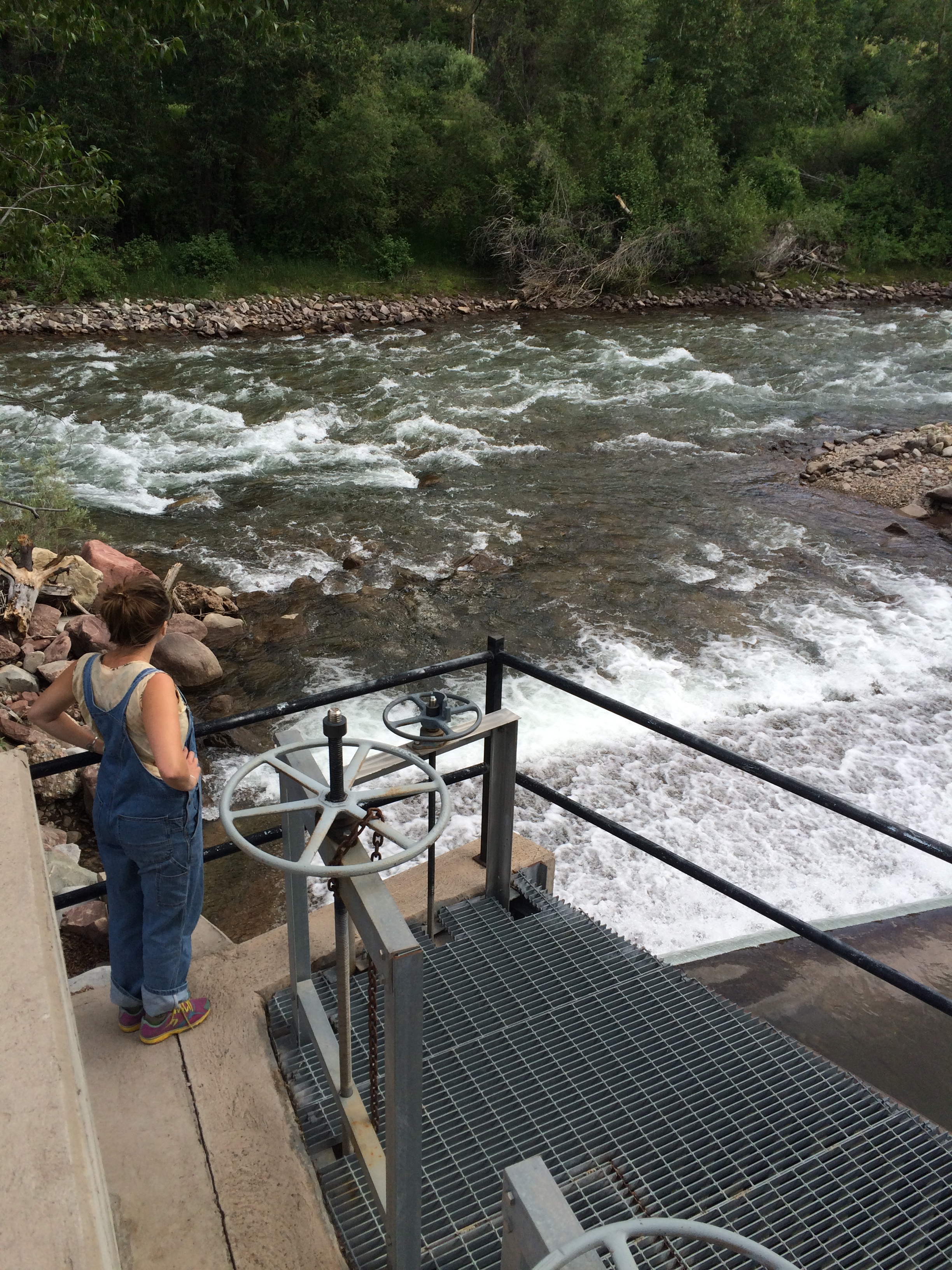By Chelsea Congdon Brundige, Public Counsel of the Rockies
In Colorado, everyone from irrigators and municipalities, law-makers and water districts, regulators and conservationists are scrambling to find ways to restore and protect the state’s over-tapped rivers. A top priority of the 2015 Colorado water plan is to balance the needs for water in agriculture, cities and industry with the need for water to protect healthy rivers and the iconic wildlife, recreation and alpine landscapes that sustain Colorado’s values, lifestyle and economy.
As director of the Water Program of Public Counsel of the Rockies, I have been working in the Roaring Fork watershed to design and implement projects that improve efficiency, accountability and collaboration in water management. Public Counsel brings strategic leadership to these projects, focusing on opportunities to leverage our local successes in the Roaring Fork watershed so they can serve as templates for efforts in other basins. I am thrilled that we will be able to share this work as part of the Colorado Foundation for Water Education’s Collaborative Water Management Tour on September 12, 2016 so that participants can learn what we are doing and can take some ideas home.

Installing the gauge in Aspen.
Our projects address several “gaps” in Colorado water policy and management. For example, while the water plan prioritizes finding ways to balance the allocation of water between consumptive and non-consumptive uses, for the most part, stream flow gauges are not in place to record baseline flows or support administration of instream flows. Without accurate measurement, there is no way to know if instream flow rights are being met, how proposed water diversions might affect healthy baseflows, and how changes in flow are correlated to changes in stream health.
In Aspen, we partnered with Aspen Center for Environmental Studies (ACES) in 2014 to address the need for greater accountability and transparency in water management through better gauging and data collection. To this end, we helped site and install a prototype stream flow monitoring gauge on the Roaring Fork River in the heart of Aspen. The new gauge records and transmits data on flow, and captures pictures of the river corresponding to those flow levels. The data are accessed remotely and published by ACES. Plus, a City of Aspen interpretative sign at the river’s edge in the John Denver Sanctuary describes the issues of river health and benefits of monitoring flows.
This gauge is the first of several that can be installed as part of ACES’ Forest Health Index to collect data to support stewardship of our forests and watershed. Data from the gauge helps us correlate the condition of our rivers with the condition of our forest, and provides a baseline for resource management decisions. As importantly, the gauge is strategically located to allow water rights administration and water accounting for several imminent projects designed to deliver water to this distressed reach of the Roaring Fork to enhance instream flows. We have worked with many partners to bring this stream gauge prototype project to fruition including: ACES, City of Aspen, the Colorado Water Trust, the Colorado Water Conservation Board, and the Colorado River District. Here is a link to the streamflow data.

A reach of the Crystal River.
Colorado’s Water Plan identifies stream management planning as critical for 80 percent of priority river basins in the state, and identifies the need for greater stakeholder engagement around water management—but there are few examples to draw on. Beginning in 2012, Public Counsel began working with Roaring Fork Conservancy and Lotic Hydrological to plan, fund, and lead a state-of-the-art stream management plan for the Crystal River, from Marble to the confluence with the Roaring Fork. During drought years, the combined demands for water in irrigated agriculture and demands for water in the Town of Carbondale for municipal use and irrigation of parks and open space lead to water shortages for some agricultural producers and impairment of river and riparian health. This plan, completed in December 2015, provides a detailed, science-based assessment of the “health” of the river, meter by meter and reach by reach, based on dozens of metrics. Our team developed an Ecological Decision Support System (EcoDSS) to evaluate countless water management and restoration options (including costs) for restoring this river. Beginning in October 2015, Public Counsel launched and professionally staffed a collaborative process with all irrigators and other stakeholders on the Crystal to prioritize projects that can be implemented to restore the River.
This project is one of the first stream management plans in Colorado. Our approach, modeling and stakeholder process are serving as blueprints for planning efforts just getting off the ground in the San Miguel watershed, the Gunnison, the Upper Roaring Fork through Aspen, and the Upper Colorado River basin. Building on our work on the Crystal River, Public Counsel is poised to leverage our successes and “lessons learned” to advance stream management planning and stakeholder collaboration around water management. Find the Crystal River Management Plan here.

On the Crystal River.
Finally, Public Counsel has been working on behalf of the Snowmass Capitol Creek Caucus in a multi-decade effort to guarantee the maintenance of healthy stream flows in Snowmass Creek. Snowmass Creek supplies water for agriculture, municipal uses, domestic needs and snowmaking in two basins, the Snowmass Creek basin and the Brush Creek basin (where the Town of Snowmass Village is located). The history here is long, but in recent years, the caucus developed a sophisticated analysis enabling water managers to project future instream flows in the Creek as a function of growth, climate change and other factors.
This analysis has informed the efforts of the Snowmass Water and Sanitation District (in the neighboring Brush Creek basin) to operate Ziegler Reservoir and other components of their water infrastructure to help buffer Snowmass Creek from diversions during periods of low flow. The district has aggressively invested in leak detection and other measures to dramatically reduce treated water losses and increase water conservation. The caucus, in turn, has used the same analysis to develop water conservation guidelines for residents in the Snowmass Creek valley and has published a Water Users Guide for Protecting Flows in Snowmass Creek—find a link to the guide here.
On September 12, CFWE is hosting a tour so that participants can see and learn first-hand about these and other exemplary collaborative water management projects throughout the Roaring Fork watershed. I look forward to the opportunity to share these projects in person. Don’t miss it… come ready to learn, ask questions and discuss. Find the agenda and register here.
Learn more about collaborative work in the Roaring Fork watershed in August 2016 blog post, “A rancher, a scientist, an angler and a conservationist walk into a room.”
 Chelsea Congdon Brundige is a water strategist with Public Counsel of the Rockies engaged in developing collaborative and innovative practices to improve the long-term stewardship of western rivers. Since 2012, Chelsea has been working in partnership with local watershed organizations and hydrologists to design highly visible and replicable projects in the Roaring Fork watershed that improve accountability and stakeholder engagement around water management. This work focuses on distressed river reaches in the Roaring through Aspen, on Snowmass Creek, and on the Crystal River. In December 2015, Ms. Brundige — working in partnership with Roaring Fork Conservancy and Lotic Hydrological — completed an 18-month stream management plan and stakeholder process to characterize the health of the Crystal River and prioritize restoration options.
Chelsea Congdon Brundige is a water strategist with Public Counsel of the Rockies engaged in developing collaborative and innovative practices to improve the long-term stewardship of western rivers. Since 2012, Chelsea has been working in partnership with local watershed organizations and hydrologists to design highly visible and replicable projects in the Roaring Fork watershed that improve accountability and stakeholder engagement around water management. This work focuses on distressed river reaches in the Roaring through Aspen, on Snowmass Creek, and on the Crystal River. In December 2015, Ms. Brundige — working in partnership with Roaring Fork Conservancy and Lotic Hydrological — completed an 18-month stream management plan and stakeholder process to characterize the health of the Crystal River and prioritize restoration options.
Ms. Brundige’s work with Public Counsel of the Rockies draws on her 2 decades of professional experience as a water resource specialist with the Environmental Defense Fund (EDF) in California and Colorado, and her work in communication as a writer and producer with First Light Films, an independent film and television company based in Snowmass, Colorado.
Chelsea graduated from Yale University in 1982, magna cum laude. She earned a M.A. from the Energy and Resources Group at the University of California in Berkeley in 1989. Chelsea served as a member of the National Academy of Sciences Committee on the Future of Irrigation from 1994 to 1996. She currently serves on the Board of Trustees of Western Resource Advocates, Colorado Rocky Mountain School, and the Snowmass Capitol Creek Caucus.

 Print
Print
Reblogged this on Coyote Gulch.